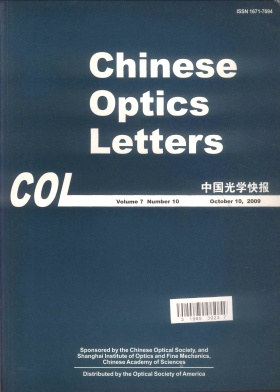Chinese Optics Letters, 2009, 7 (10): 894, Published Online: Oct. 16, 2009
Interaction between antitumor drug and silver nanoparticles: combined fluorscence and surface enhanced Raman scattering study  Download: 650次
Download: 650次
Abstract
Optical methods and MTT method are used to characterize the antiproliferation effect of antitumor drug 9-aminoacridine (9AA) with and without silver nanoparticles. Intracellular surface enhanced Raman scattering (SERS) spectra and fluorescent spectra of 9AA indicate the form of 9AA adsorbed on the surface of silver nanoparticles. Although both silver nanoparticles and antitumor drug can inhibit the growth of Hela cells, silver nanoparticles can slow down the antiproliferation effect on Hela cells at low concentration of antitumor drugs. Our experimental results suggest that silver nanoparticles may serve as slow-release drug carriers, which is important in antitumor drug delivery.
Jing Yang, Hong Wang, Zhuyuan Wang, Xuebin Tan, Chunyuan Song, Ruohu Zhang, Jin Li, Yiping Cui. Interaction between antitumor drug and silver nanoparticles: combined fluorscence and surface enhanced Raman scattering study[J]. Chinese Optics Letters, 2009, 7(10): 894.





